 | | Soila Sayialel says... |
|
Some Good News
 | | The rains have come early, they've been good and we're expecting more. It's such a relief to be able to say this after three years of poor rainfall. It's a joy to be out in the Park with its green, green grass, ponds and puddles everywhere, and snow on the mountain.(The above photo was taken on November 15.) Best of all the elephants are relaxed, contented and getting fat. Because the vegetation is so rich and nutritious they have time rest and socialize. Big aggregations are forming again and there the females find old friends, the calves find new playmates and the musth bulls come in to find females ready to mate.
|
Christmas Special
 | | Typical 4-year-old calf ready to be named |
| | A wonderful present for a loved one for these upcoming holidays is to name a calf in his or her honor. It's perfect for grandchildren, grandparents, favorite uncles, or even as a gift to yourself. Our naming program is exclusive.The name you choose will be assigned to a calf and entered in our database. That calf will never have another name. It's not like an adoption program where hundreds of people can adopt the same animal. You will receive photos of the calf and a history and present structure of its family. You can follow its life as it grows up. The usual donation to name a calf is $2500 but for the holidays we're offering a naming for $2000. For more information go to:
www.elephanttrust.org/node/200; or write to us at info@elephanttrust.org.
|
|
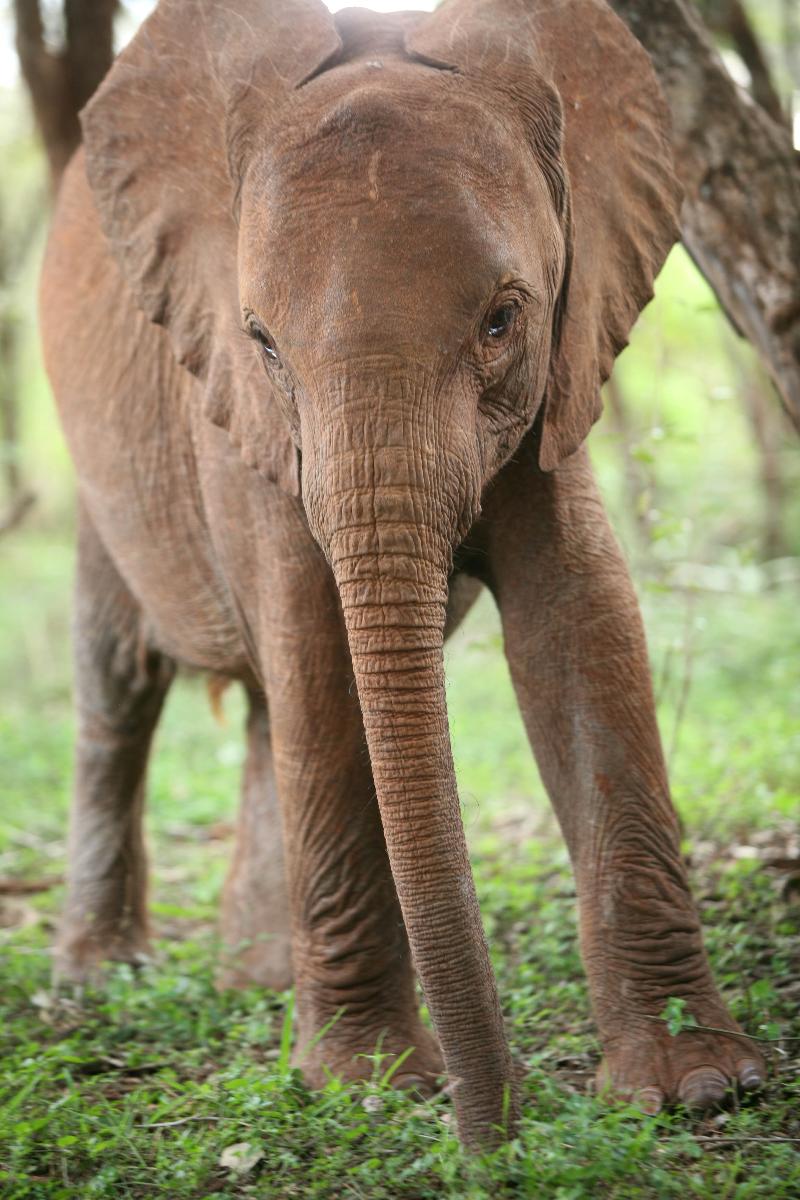 | Kitirua Doing Well in Nairobi
| |
In the previous e-newsletter we wrote about an 18 month old calf who was found completely on her own and was subsequently rescued when our team contacted the David Sheldrick Wildlife Trust. Kitirua, as she was named, was taken to the Sheldrick orphanage in Nairobi, is doing well and has made good friends with another calf around the same age. It's a relief to know that she's with other elephants and being well cared for.
|
The Amboseli Book
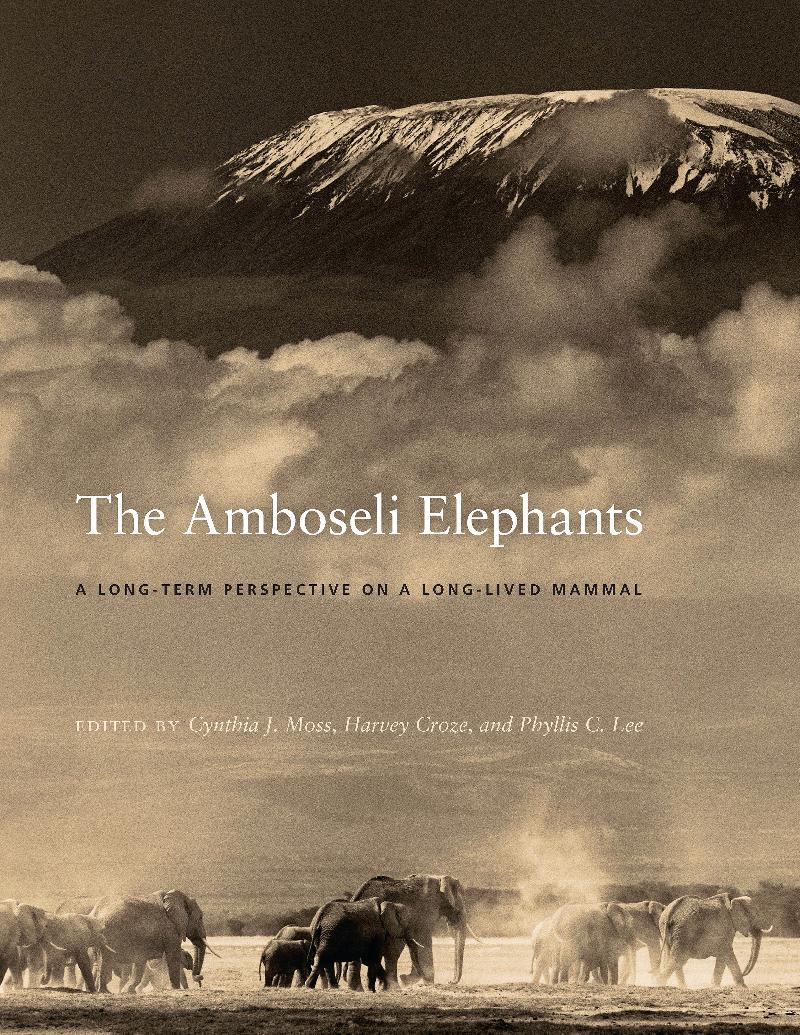 Available Soon Available Soon
| | We're very excited to announce that our long-awaited scientific book is finished and will be published in February 2011. It is available for pre-publication order on Amazon.com.
|
|
|
News from the Amboseli Trust for Elephants
November 2010
|
Greetings!
I truly wish I could just give you only happy news of the Amboseli elephants, and there is definitely good news, but there also continues to be very disturbing news. The poaching seems to be escalating. Just during the past 10 days at least five more elephants were poached. In one of the cases, a lodge managers outside the Park heard gunfire but there was little he could do. An airplane would have helped, a helicopter would have been even better. The area where two of the bulls were killed is very thick bush and uneven terrain and is impenetrable by vehicle. Norah and Soila had to go in on foot to try to identify one of the individuals, but the poachers had cut off the ears, and without both the tusks and ears no ID was possible. All they could determine was that he was a big bull on his last set of molars which would make him 45 or older. In other words he was one of Amboseli's magnificent bulls.
It is heartbreaking and very discouraging but we can't give up. In the stories below you'll see why elephants are so special and why we must keep fighting for them.
With greeting rumbles,
Cynthia Moss
DirectorAmboseli Trust for Elephants |
|
|
The Winning Name for Erica's Calf
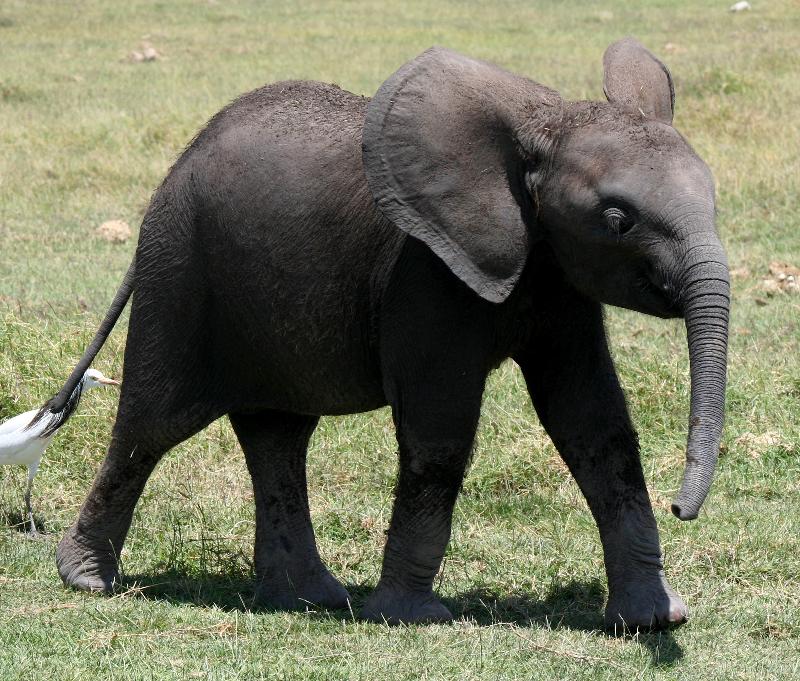 |
"Errol" on November 12th |
Well, it ended up not being difficult to chose the name, but only because we left it to one person. Sixty three names were submitted by 53 different people. I am pleased that so many of you got involved and had some fun with the contest. When all the names were turned into a list I sent them out to the seven main researchers who work on the Amboseli Elephant Research Project. I asked them for their two top favorites. That turned out to be a complete flop because I got 14 different names back.
Fortunately, we found a brilliant solution. Erica the elephant had been named for Cristina Croze's mother. Erica the person is a wonderful lady who will be 90 years old next year. Harvey and Cristina gave her the list to look over and she unhesitatingly chose "Errol" because she remembered Errol Flynn from her younger days. So little Errol it is. We expect him to turn into quite a swashbuckler. I'm sure he'll also grow up to be a very handsome bull. The winning name came from Monika MacDevette.
For those of you whose names were not chosen, don't despair I now have 62 excellent 'E' names that we will able to put to good use in both the EA and EB families over the next years as they produce more calves. Thank you.
To understand more about how we name elephants go to the following post on our website: http://www.elephanttrust.org/node/748.
|
 |
Pregnancy and a New Calf
When I was in Amboseli in October and out with Echo's family, the EBs, I noted that Europa, the 15-year-old daughter of Edwina, was lagging behind the group looking slow and heavy. Her breasts were full-size so I knew she was going to have a calf soon.
Young female elephants don't develop breasts until they're pregnant. The development and increasing size of the breasts is the main way we tell if a first mother is pregnant and when she's going to give birth. With older females it is far more difficult. First of all, once she is about 20 years old a big female hardly shows any change in shape when she's pregnant. Secondly, she will already have a calf who is very likely still sucking so her breasts will not be an indicator. Towards the very end of the pregnancy she might trail behind the others in her family in the way that Europa was doing, but otherwise we can only guess. If we saw her in oestrus and she hadn't come into oestrus again, we can try to make a prediction. In the case of Europa I was sure and alerted the field researchers to keep an eye on her. I arrived back down in Amboseli on November 6. Soila picked me up from the airstrip and as we were driving toward the camp we came upon the EBs and there was Europa with a brand new calf. He still had a bit of the umbilical cord and he was unsteady on his feet. However, he looked strong.
Once again, as with Erica, I was surprised that this young female was able to carry the calf through the drought. He must have been conceived in late December 2008/early January 2009 so for the first 12 months Europa was not getting the diet a pregnant mother should. However, for the next 10 months there was an abundance of vegetation and the calf was able to get the nutrition he needed.
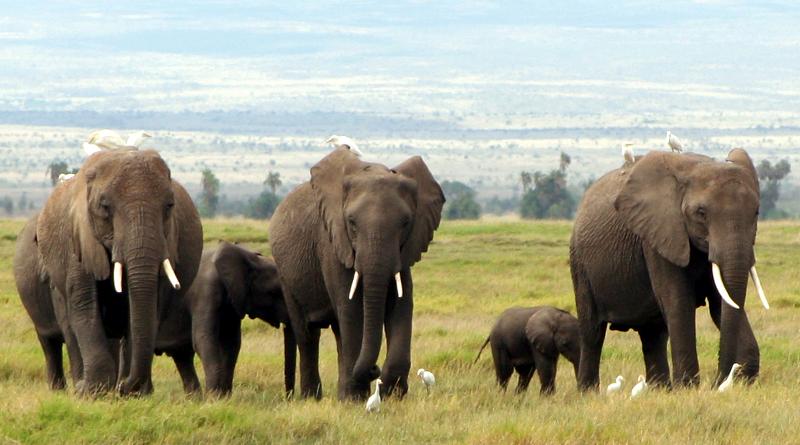 | | Edwina (Elana & Elif behind), Elaine, new calf & Europa |
|
 |
|
History of the CB Family
I first met the CB family on October 20, 1973. They were in a large aggregation of over 100 animals and all I could do was just photograph individuals. It took many more sightings over the next two years to begin to sort out who made up the family. In fact I did not see the family again until March 1975, but from that point on I began to see them regularly.
I have to admit that the CB family has always been one of my favorites. When I first got to know the family it had a marvelous, old matriarch who had large, droopy ears. She was eventually named Cassandra but I always called her "Droopy Ears".
 | | Calandre, Droopy Ears, Christina & calves - December 1973 |
What I liked so much about her was that she was a very fierce defender of her family. Even as early as 1972 when we started the study in Amboseli, the elephants were very tolerant of vehicles. Having worked with Iain Douglas-Hamilton in Lake Manyara I was accustomed to being charged by the much more aggressive elephants there. I did not like being charged, but I did admire the bravery of those big females. In Amboseli the elephants hardly looked at my car when I drove up. Some of the families that used the Park less frequently ran away when I tried to approach, but the only family that responded by charging was Droopy Ears's. Something unpleasant associated with a car must have happened to her in her long life and she was determined to defend her family from the danger she perceived. I liked her spirit.
To read the full history of the CB family go to: http://www.elephanttrust.org/node/750.
|
|
Another Bull Killed
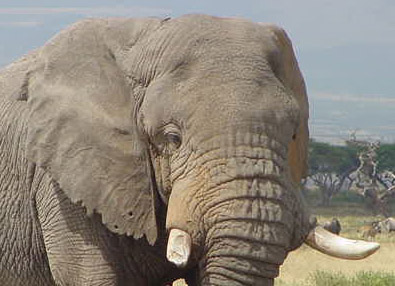 | | Magna: killed in his prime |
As I mentioned above we know of a minimum of five elephants killed in the last two weeks. Three of the carcasses were in Kenya. We found that one was a very large male on his last molar. His tusks had been chopped out and his ears had been cut off and chewed on by hyenas so it was impossible to recognize him. He is bound to be one of our well-known bulls and it almost worse not knowing who he is than knowing. The second carcass was a young male who was hidden by cut branches; he was also impossible to identify. The third carcass was fresh and Norah and Soila immediately identified him as Magna, a massive bull with an exceptionally big head. Born around 1965, he was 45 years old, but he did not have big tusks, which shows that the poachers will kill anything they find.
Two more carcasses were found across the border in Tanzania. Our researchers can't go there to try to identify the elephants because they don't have permission to cross the border. However, we know they will be Amboseli bulls, part of the cross-border population.
We and other organizations are doing everything we can to stop this slaughter, but it is very difficult. We need your support.
|
|
I flew up from Amboseli this morning, November 16. I left with mixed feelings. It had rained in the night and the air was incredibly clear and the vegetation washed clean. The whole place seemed to sparkle. That made me happy. At the same time I knew there were poachers operating outside the Park and it could be that there was another bull being killed as I was thinking about it. Conservation is made up of sorrow, hope and brief moments of joy. Saving wild places and wild animals is not simple or easy, but it is always worth fighting for. Please help us in this battle.
Cynthia Moss
Amboseli Trust for Elephants |
|
|